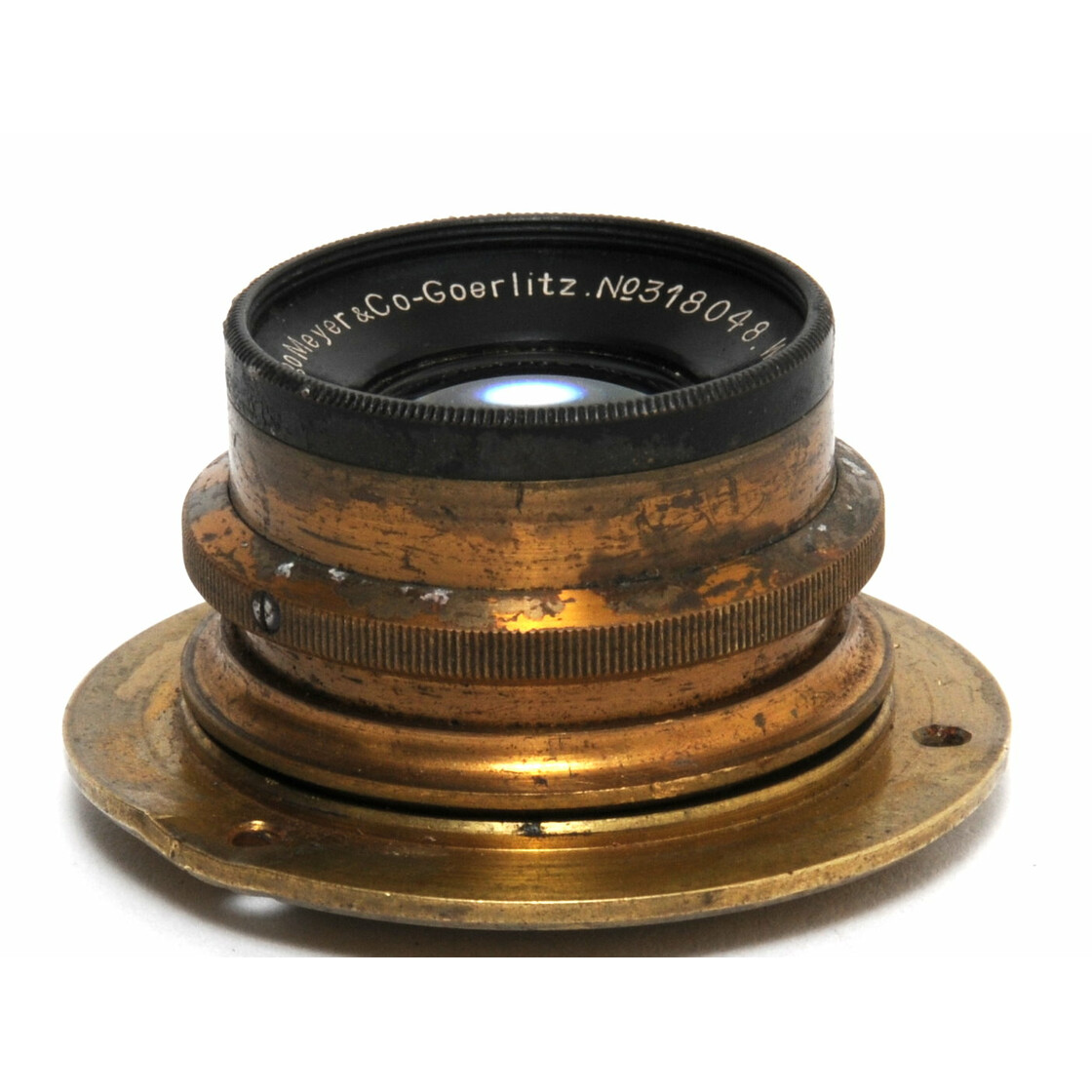
We offer you an opinion, a council, an expertise of your objects or your collections. Marked on front: Hugo Meyer & Co - Gorlitz No 248266 Aristostigmat 1:4,4 Foc 7 Inches Marked on brass side: Made in Germany This lens came from the private collection of a vintage / antique camera collector in Los Angeles. Lens: Meyer-Optik Görlitz Telemegor 1:5.5/180 V Aperture: f/5.5 Exposure Time: 0.002 sec. We invite you to visit us at 16 rue de Vaugirard in Paris in the 6th arrondissement, between the Luxembourg Gardens and Saint Germain des Prés. a7s + Hugo Meyer & Co Goerlitz Rapid Wide Angle Aristoscop No 4 F 63 inches f15. The big brass lens in the image above is heavier than a modern SLR, its sized for a big studio camera. (disappearing in the mist of time) + Hugo Meyer & Co Goerlitz Wide Angle Aristostigmat Foc 7 inches 1:9 (1930) photo made with: a7 + Rodenstock XR-Heligon. About Meyer Optik Görlitz from Wikipedia. The image shows in its lower left corner a drawing of an Aristostigmat f6.8. Meyer Optik Görlitz (or Goerlitz German), originally Hugo Meyer & Co., was founded in 1896 by optician Hugo Meyer ( March 1, 1905) and businessman Heinrich Schätze. Much smaller variants for hand cameras were available, fitting in Compur shutters. Intermediate sized focusable variants may have been the fastest like the Hugo Meyer Aristostigmat 180mm f4.4. We are there from Tuesday to Saturday, from 11 a.m.
Hugo meyer lenses movie#
Hugo Meyer Weitwinkel Aristostigmat 120mm F9 5x7 Hugo Meyer Weitwinkel Aristostigmat 5x7 Max 50 OFF 120mm F9 90 Hugo Meyer Weitwinkel Aristostigmat 120mm F9 5x7 Cameras Photo Vintage Movie Photography Vintage Lenses Aristostigmat,120mm,5x7,Cameras Photo, Vintage Movie Photography, Vintage Lenses,Hugo,Weitwinkel,90,F9. Wikimedia Commons has media related to Meyer-Optik.Collections of photographs and photographic processes from the 19th century, rare cameras, early cinematographic apparatus, scientific, technical, acoustic, optical, electrical or astronomical instruments and optical toys. According to the report, net SE had additionally registered multiple other trademarks for respectable, but defunct, historical companies and was pursuing ways to insulate the new entities one from the other. More recent reports have net SE, the company behind the modern Meyer Optik Görlitz trademark, running what looks very much like an illegal ponzi pyramid scam, with Kickstarter implicitly assisting by tolerating breaches to its terms of service, meant to have restricted exactly this type of event from occurring. That same year, net SE - Globell Deutschland launched a Kickstarter campaign to produce the Trioplan f2.9/50, a special new lens that revived the tradition of a versatile "soap-bubble" bokeh lens. Meyer Optik USA is headquartered in Atlanta, GA. In May 2015, net SE created a new subsidiary, Meyer Optik USA Inc., to distribute Meyer-Optik-Görlitz brands in the United States. In 2014, net SE, a publicly listed company (NETK) founded in 1997, working with the brand manager Globell B.V., exhibited new lenses under the Meyer-Optik-Görlitz name at the Photokina trade fair and began delivering the lenses in December of the same year. However, despite privatization efforts, the company was unable to attract investors and was liquidated shortly after. In 1990, Feinoptische Werk Görlitz was spun off from VEB Carl Zeiss and converted into a private limited company and started to produce lenses with the Meyer-Optik logo. Many products were discontinued in favor of competing models produced by Carl Zeiss, while the equipment required to produce high-quality zoom lenses could not be procured. After being integrated into the VEB Pentacon and VEB Carl Zeiss collectives, the Meyer-Optik name was no longer inscribed on lenses after 1971. In the post-war era, the company produced mainly Trioplan triplets, usually for viewfinder cameras produced by Dresden-based camera manufacturers Welta, Balda, Beier, and Altissa.

During World War II, civilian production discontinued and mainly optical components for telescopes were produced.Īfter the war, the company was expropriated from the Saxony armaments industry and management under the name VEB Optisch-Feinmechanische Werke Görlitz. In 1936, the company was renamed Optische und Feinmechanische Werke Hugo Meyer & Co and produced approximately 100,000 lenses a year. Rudolph also gave Meyer Optik access to his patent for the so-called Plasmat lenses, which at the time included one of the most powerful lenses in the world. Studio camera "Görlitz" Germany, 1930's, National Polytechnic Museum in SofiaĪ key business decision was made in 1920 when the company decided to work with former Zeiss developer Paul Rudolph, who was previously significantly involved in the success of the Protar, Planar and Tessar lenses.


 0 kommentar(er)
0 kommentar(er)
